Vox Continental Organ – The Ambassador of Hip
10mins read • Bryan Clark
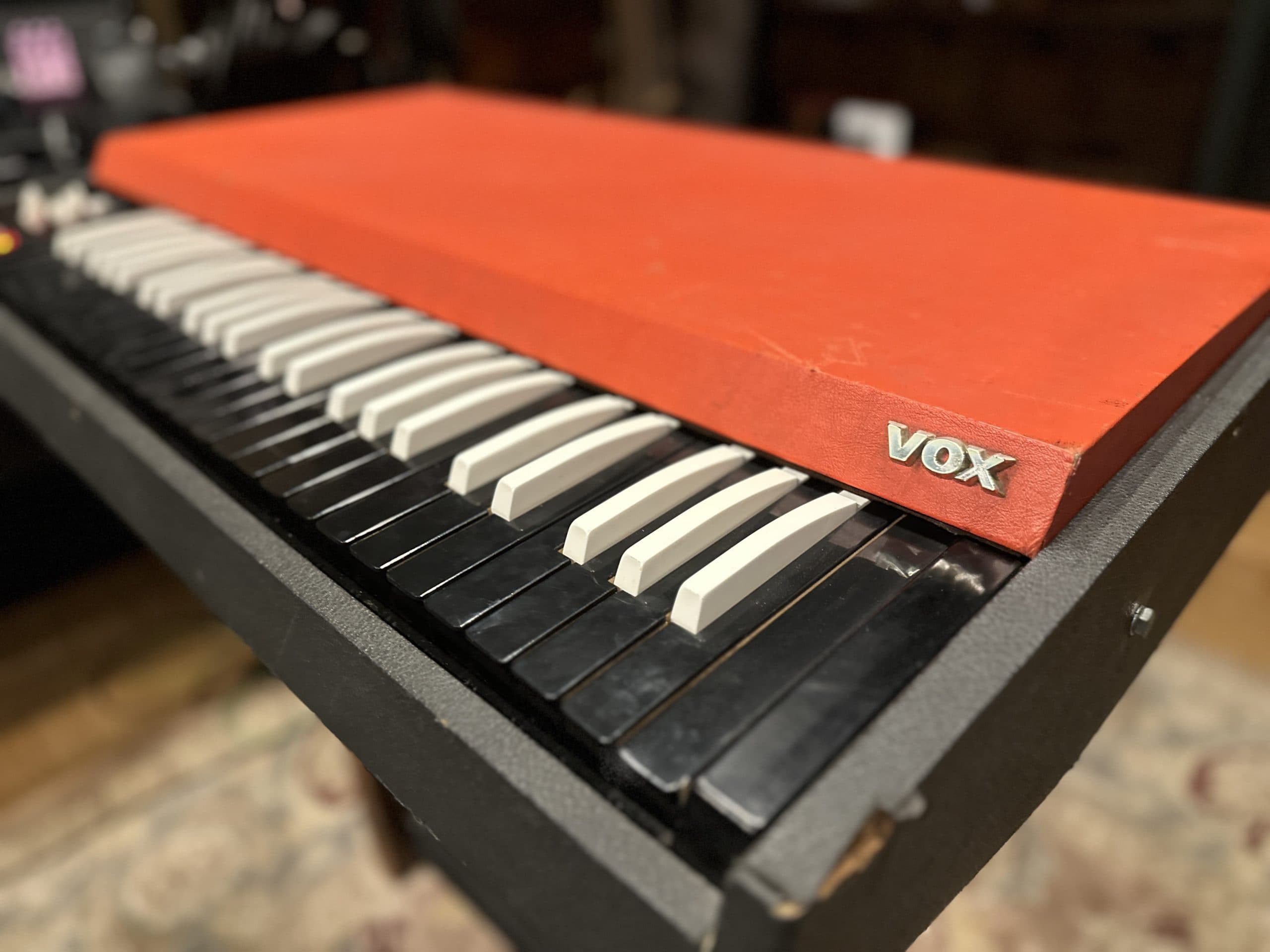
Jump To Section
The Ambassador of Hip

Bursting onto the music scene in 1962, The Vox Continental Organ is an iconic musical instrument that has left an indelible mark on the world of music. Weighing in at just over 70 pounds this forty nine key, aesthetically refined, red-topped juggernaught borrowed from distant past Baroque-era harpsichords by inverting the standard white and black color scheme of classic organ and piano manuals and simultaneously embraced the future eschewing vacuum tubes for solid-state technology. They even had one on display at the internationally acclaimed Metropolitan Museum Of Art in NYC (known as The Met). I’m going to take you on a deep dive and explore the Vox Continental’s origin, history, and enduring legacy of influence on rock, pop, and electronic music over the the last 60 years.
The Origin
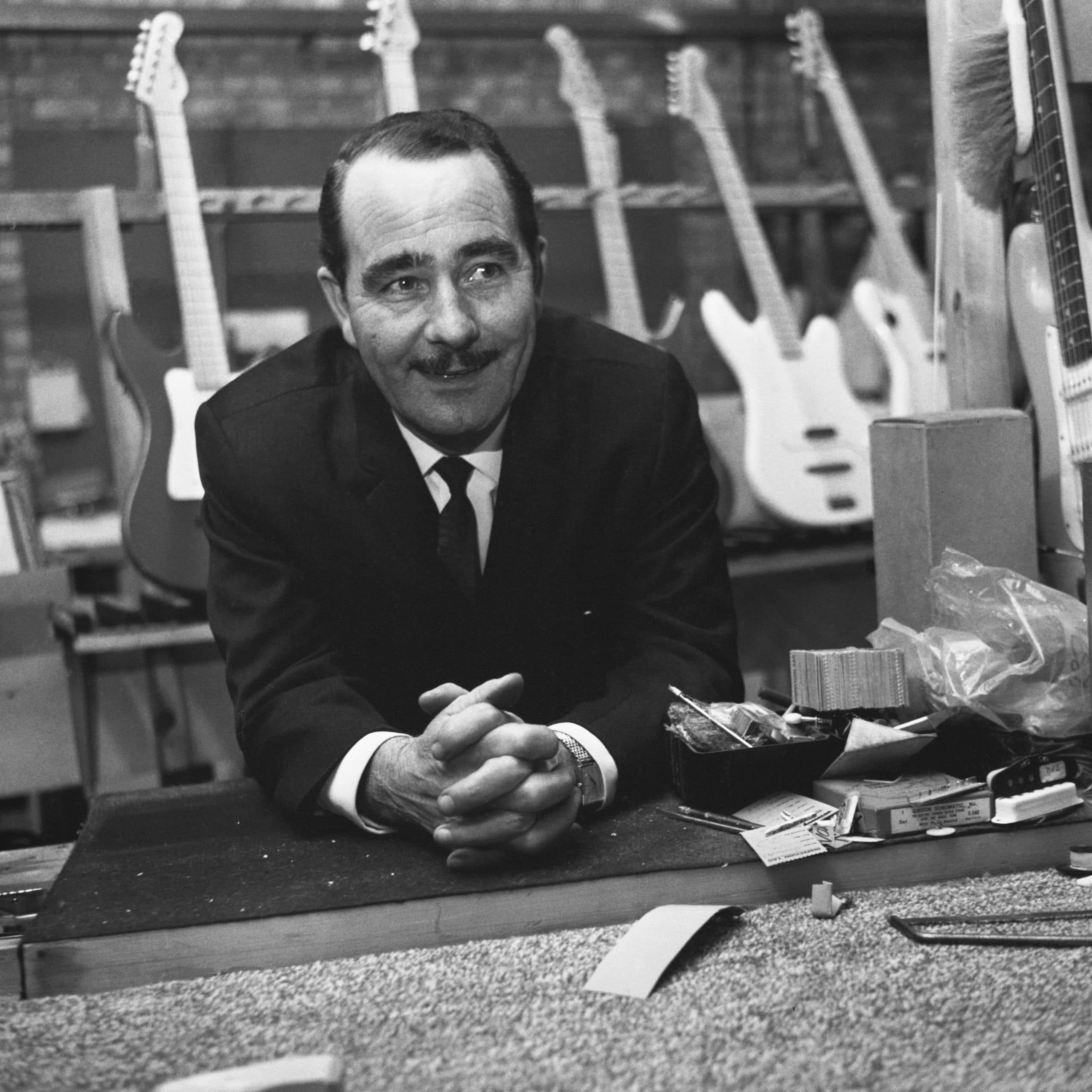
The story of the Vox Continental Organ begins in the early 1960s when Tom Jennings founded Jennings Musical Industries (JMI) in Dartford, Kent, England. Jennings was a visionary entrepreneur with a background in electronics and a passion for music. His goal was to create innovative musical instruments that could cater to the evolving needs of musicians in the burgeoning rock and pop music scene of the time.
The Vox Continental Organ was designed to be a more portable and affordable alternative to traditional organs, which were bulky and expensive. It’s futuristic compact design, made it ideal for touring musicians who needed an instrument that could easily fit in the back of a van.
However, it was the Vox Continental Organ’s sound that truly captured the imagination of musicians and audiences alike. Its distinctive tone was achieved through a combination of factors, including the use of transistors in its tone generation circuitry and the inclusion of Hammond-esque drawbars that allowed players to shape the sound to their liking. The result was a warm and resonant tone that had a unique character, making it an ideal choice for the music of the time.
The Ladies of the Loom
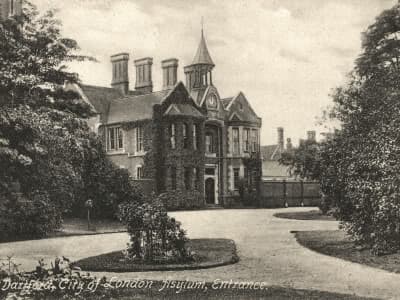
The Vox Continental organs were originally assembled at “Unity House” (the Jennings Factory) 119 Dartford Road, Dartford, Kent, with the majority of parts contracted out to various manufacturers that had a history of building organs in the UK. The idea behind this was that outsourcing would allow JMI to reduce overhead and payroll obligations as well as be more streamlined in manufacturing inventory and warehousing. While the key contacts and drawbars were made by another company in Kent, the organ’s cabinet was made in Essex, and the volume pedals were made in Germany by Schaller.
Of particular note, and one of the most fascinating and macabre examples of outsourcing labor that I can think of, female psychiatric patients residing at Stone House Hospital (formerly known as the London Lunatic Asylum) bundled the wire looms together from the oscillator circuits to the output amp. Inside this “horrible Victorian-style” institution, these ladies would write their names onto tiny little hang tags attached to their particular portion or loom. My guess is that their employment was more of the result of JMI’s rapacious mindset for cutting costs, exploiting handicaps, avoiding labor unions, and increasing profitability rather than a respectful offering of commensurate remuneration and nurturing these women with a sense of accomplishment and financial independence. I have emotions that in turn range from eerie bewilderment to bucolic melancholy to smoldering outrage. Bless the “ladies of the loom” for all they did.
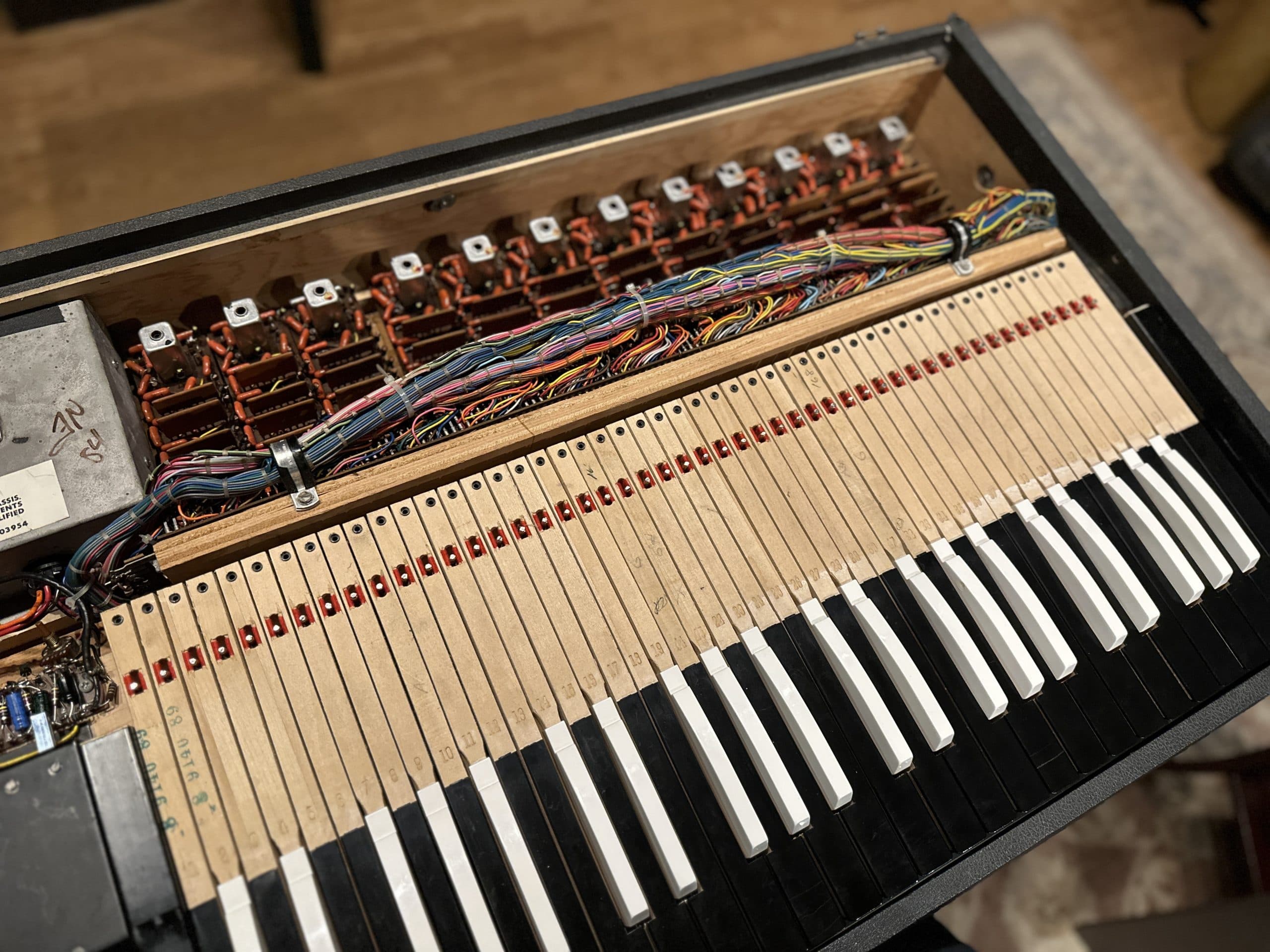

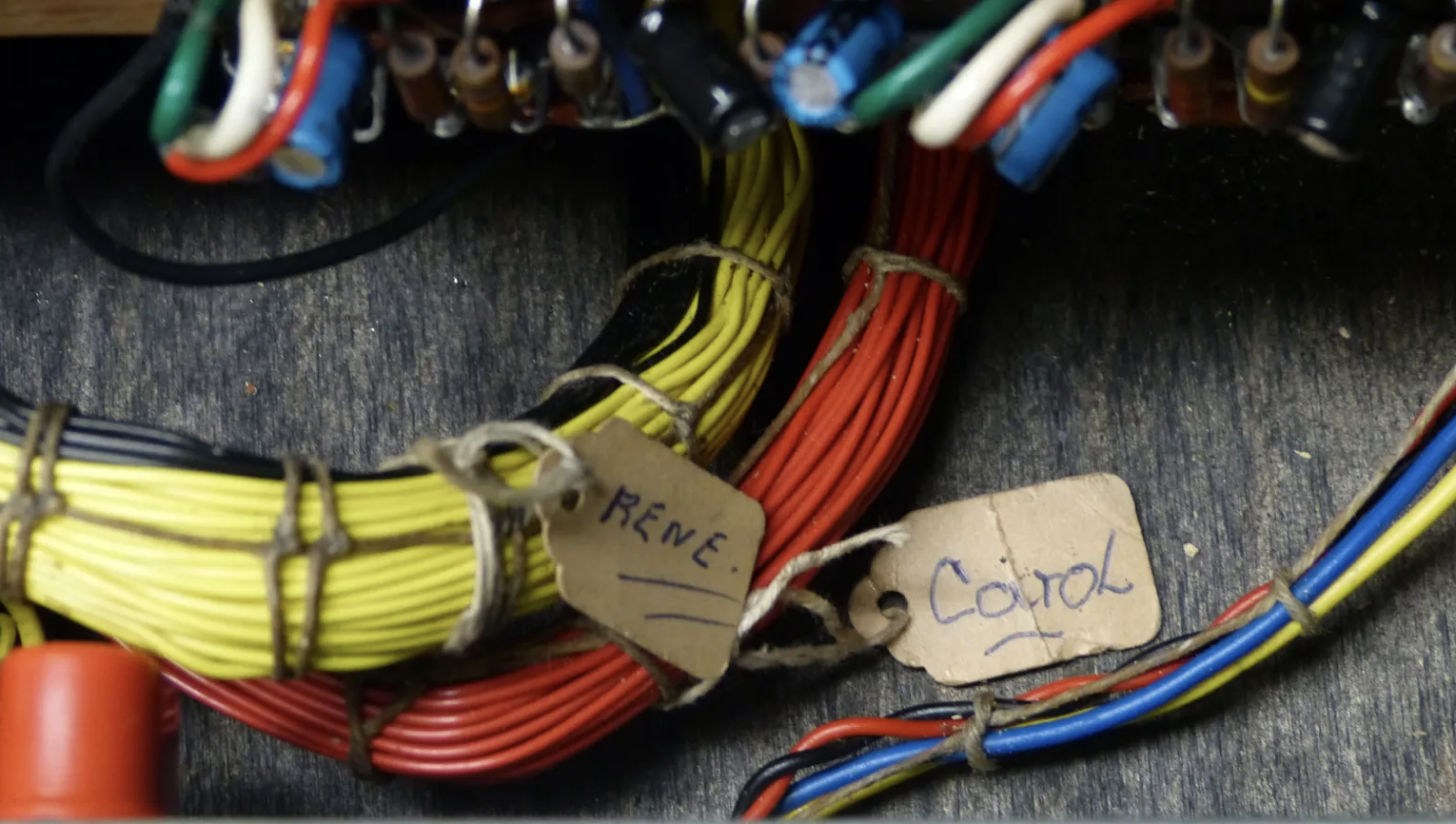
A Truly Continental Journey
The earliest UK built Continentals from 1962 to 1963 were built in Dartford, Kent, and differ aesthetically from later models in that they have taller “boxy” lids. At some point in 1963, Vox redesigned the hight of the 6 drawbar assembly that resulted in a lower, slanted orange lid.
To keep up with growing demand (bolstered by the Beatles using them in live shows), JMI moved the majority of its research, development, and assembly to a second story warehouse it shared with Burndept Electronics who built amp and organ chassis for JMI and Vox.
However, on December 1, 1965 a large fire completely destroyed the second floor which exacerbated the already existing shortage of Continentals in the UK. Vox’s US distributor and licensee, Thomas Organ Co., started to build the organs outside Los Angeles, CA. About 1000 single manual Vox Continentals were built in California.

While keeping some elements the same (wooden keys with plastic surfaces), the Continentals built by Thomas Organ in the US slightly improved the playing action of the keys and most notably, replaced the finicky germanium based transistors with brown, rectangular silicon transistors that were unified into a single circuit strip to increase production output (see picture below). The silicon transistors gave the organ a slightly smoother timbre. The signature orange lids were replaced with a much heavier and durable orange vinyl covering.
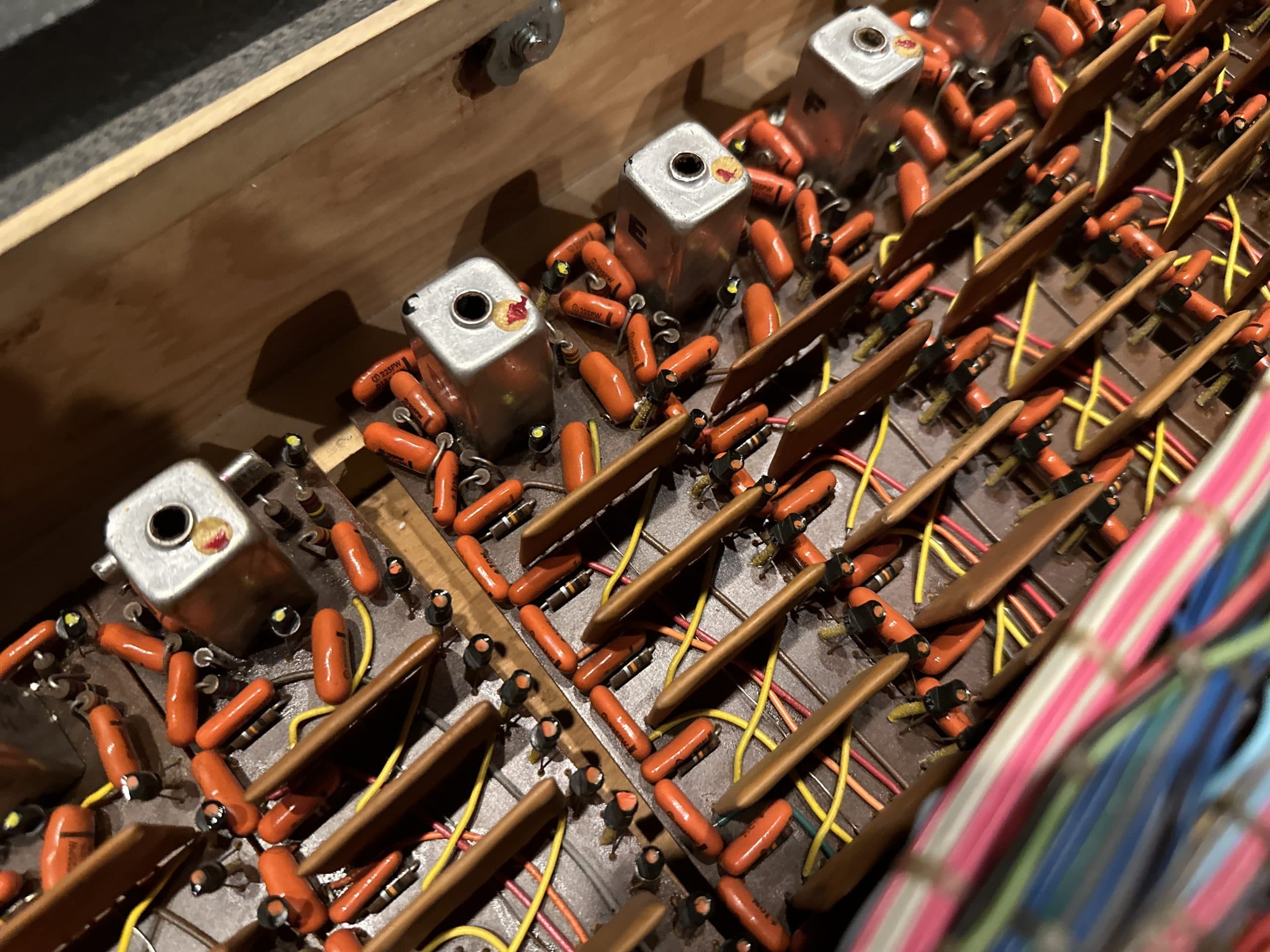
Just as production started to ramp up in the US, the entirety of Continental production was moved by Thomas OrganCo. and UK parent company Royston to Italy in hopes of cheaper and more skilled labor (Italy already had a long tradition of building accordions). By June of 1966, production of single manual Continentals was underway and the bulk of these organs serviced the US and North American markets while other emerging markets were still serviced through productions facilities back in the UK.
Like their American cousins, the Italian Continentals also had some notable changes. The plastic covered wooden keys were replaced with plastic covered metal keys that had a propensity to become detached and/or break. The US silicon transistors were discarded and the original germanium transistors were restored. The stands differed from ones in the US and UK in that the end of tubing featured an angled cut and the stand braces crossed instead of meeting at a single point. There were also other minor cosmetic differences like the font of the VOX logo and its placement on the organ itself.
All in, of the 9,000+ single manual continentals that were made, “4,100 were made in the UK, 1.000 in the US, and 4,000 in Italy“. Truly a “Continental” instrument and made in three different countries.
That "Vox" Sound - Early Adopters
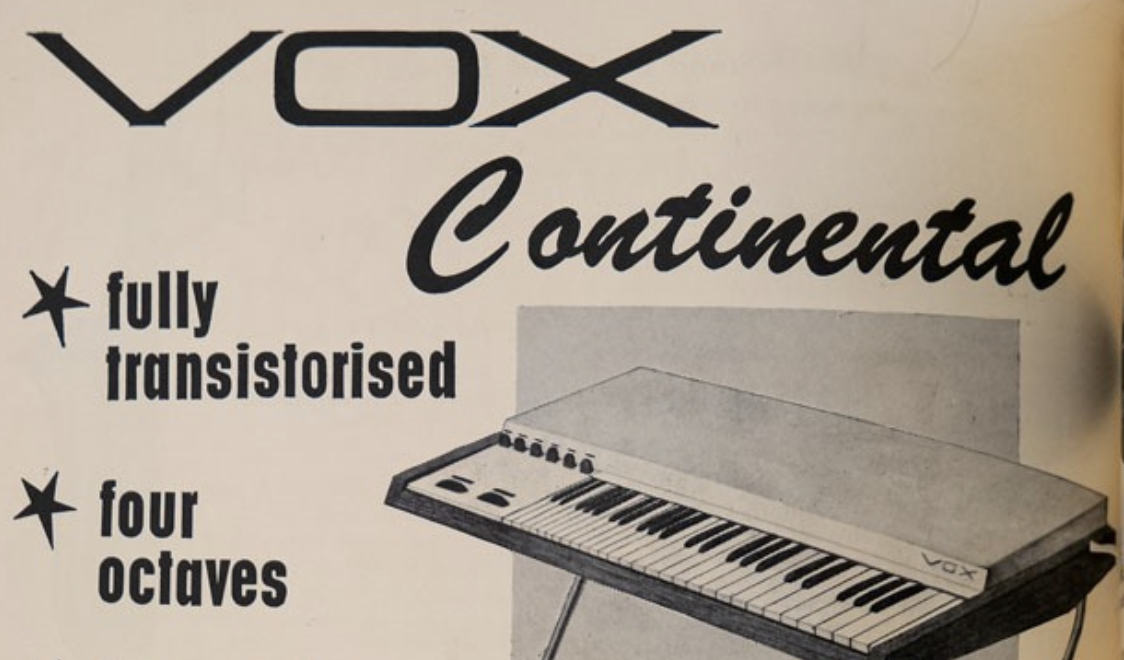
The Continental’s distinctive sound became synonymous with the British Invasion, and it played a pivotal role in shaping the sound of 1960s rock music. By 1966 it found favor among most of the influential bands of the era, including The Animals, The Beatles, Dave Clark Five, The Shadows, The Rolling Stones, and The Yardbirds.
In America, The Monkees, The Standells, the Grateful Dead, and Iron Butterfly also had great success with the instrument. For Paul Revere and the Raiders, the Continental was also core element of the band’s recorded discography.
One of the most famous users of the Vox Continental Organ was Ray Manzarek, the keyboardist for The Doors. His use of the Continental on songs like “Light My Fire” and “Riders on the Storm” contributed to the instrument’s iconic (and now truly continental) status in rock music history. Its ability to produce piercing, psychedelic tones made it a perfect match for the band’s experimental sound.
By the late 1969, the Continental “sound” seemed to fallen out of favor in most commercial music. It wouldn’t really be featured in cutting edge album releases for almost a decade.
The Resurrection

The organ could be heard intermittently on a smattering of hits as early as 1974 like at on the back end of Grand Funk’s “Some Kind of Wonderful”.
Everything changed drastically on December 17, 1977, when Elvis Costello and the Attractions defiantly spat in the face of their record company and NBC by derailing their scheduled song performance of “Less Than Zero” on Saturday Night Live. 8 seconds into the first verse, Elvis abruptly stops the band and kicks into a searing rendition of “Radio, Radio” – a song that criticizes the mind numbing, mass complicity of commercialized broadcasting.
“Radio is a sound salvation / Radio is cleaning up the nation / They say you better listen to the voice of reason / But they don’t give you any choice ’cause they think that it’s treason / So you had better do as you are told / You better listen to the radio.”
The stunt would illicit a held up middle finger from SNL producer Lorne Micheals for the duration of the performance as well as a 12 year ban from the show.
It also featured the Vox Continental. Quite suddenly, the Continental was back and on big recordings. Like many of his countrymen a generation earlier, the Continental was also featured heavily of his first two records “My Aim is True” (1977) and “This Year’s Model” (1978).
The organ’s distinctive timbre was featured back in the US on Tom Petty’s “Don’t Do Me Like That” from “Damn the Torpedoes” (1979).
Since then, The Vox Continental has secured its place in rock and roll history on thousands of recording spanning multiple genres from electronic music, prog metal, indie rock, reggae, and R&B.
The Continental Legacy and Future
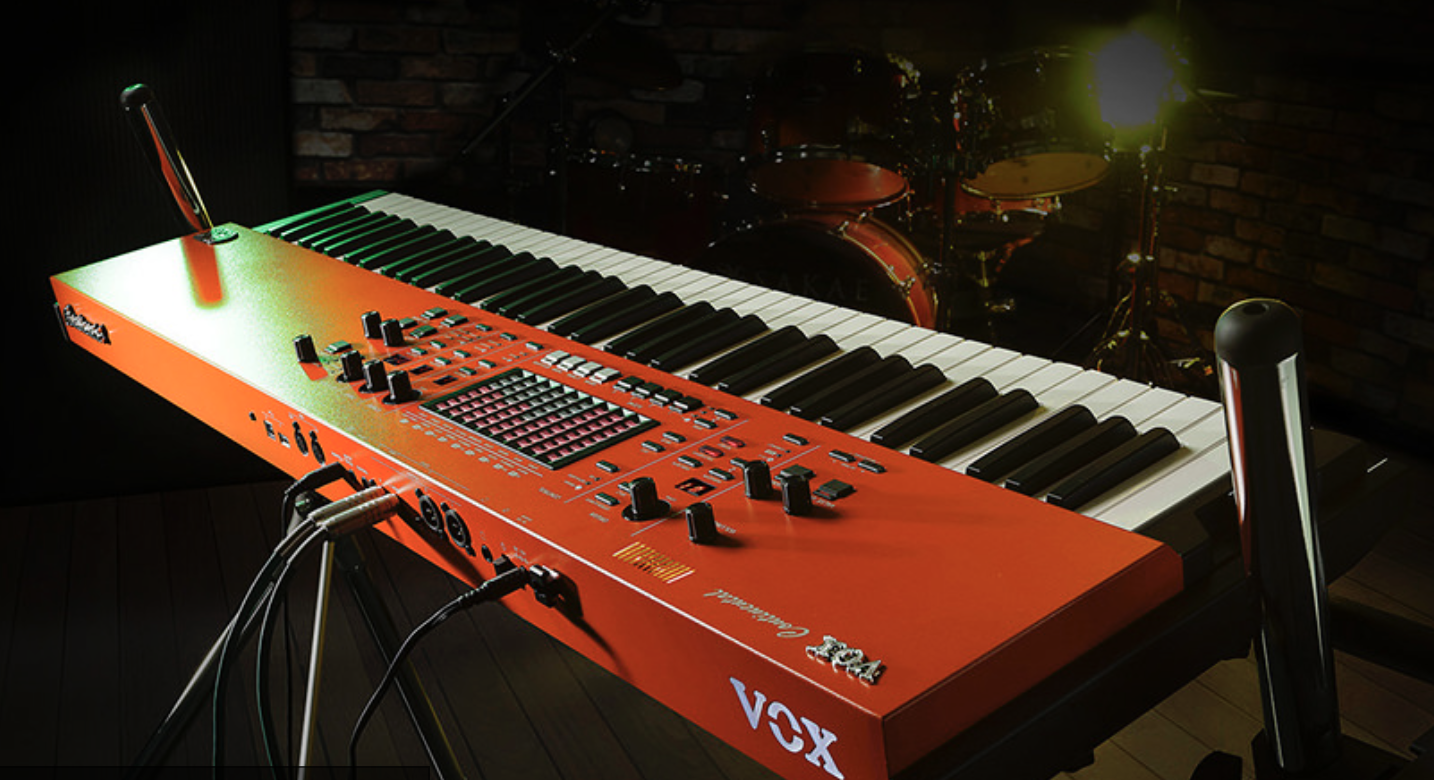
Even though the Vox Continental has secured its place in rock and roll history on thousands of recording spanning multiple genres from electronic music, prog metal, indie rock, reggae, and R&B, the story is far from over.
In the following decades, it experienced a resurgence in popularity, thanks in part to its enduring association with classic rock music. Musicians and collectors began to recognize its historical significance and unique sound, leading to a renewed interest in the instrument. You can occasionally find originals for sale in vintage gear marketplaces.
In the 2000s, Vox, a Japanese company known for its amplifiers and effects pedals, acquired the rights to the Vox name and set out to revive the Vox Continental Organ. The company introduced the Vox Continental Digital Organ in 2017, combining the classic design and sound of the original with modern digital technology. This reimagined version retained the familiar drawbars and tone-shaping controls while adding new features such as customizable presets and MIDI connectivity to further find its way into the hands of a new generation of musicians who can appreciate its vintage charm and sonic versatility.
The legacy of the Vox Continental Organ represents an era of innovation and experimentation in the world of music technology. Its spartan design and unique sound continues to leave an indelible mark on modern electronic keyboards and synthesizers. From its humble beginnings to its resurgence in the digital age, it has maintained its status as an iconic instrument with a unique and timeless sound.
You may also be interested in other Vox gear, especially their better known guitar amps. Of course, we have video content related to that too and other keyboard related topics on www.InsideBlackbird.com.
– Bryan Clark


